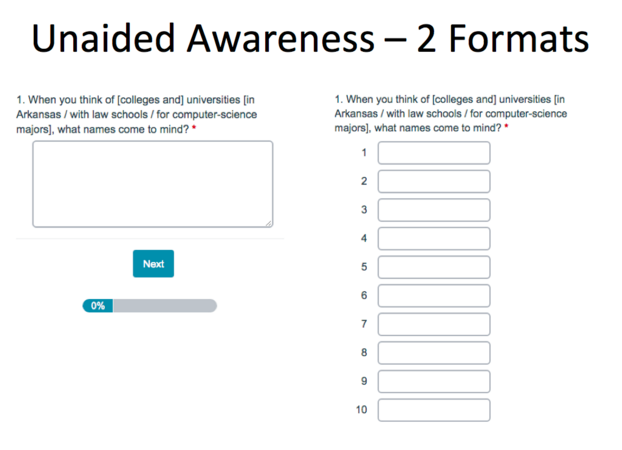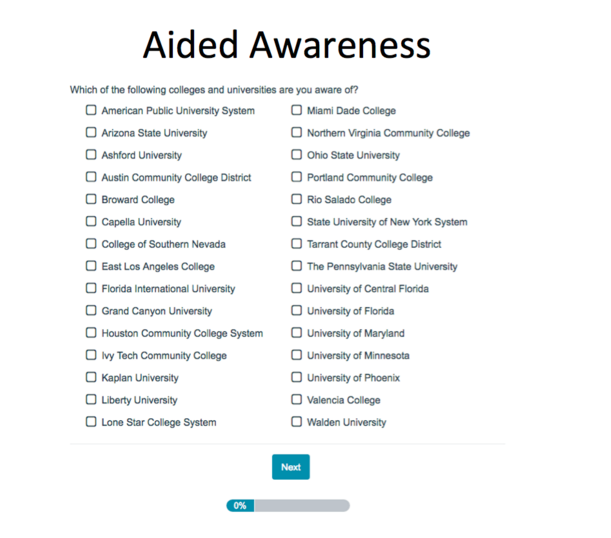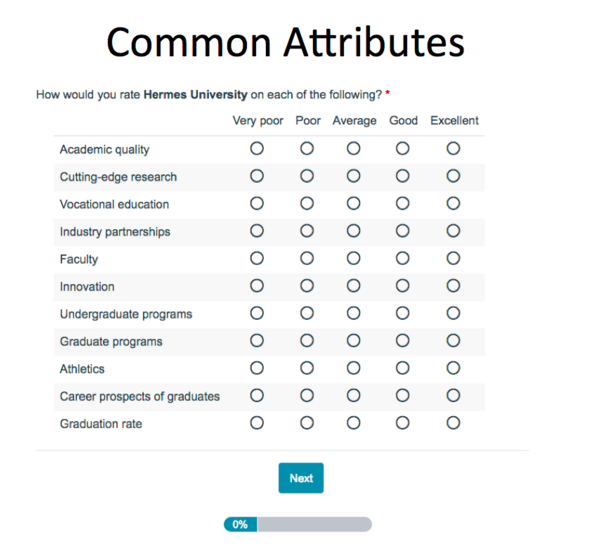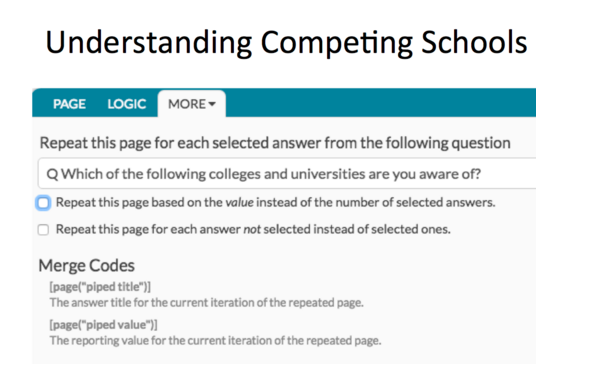Colleges and universities are no longer just competing with one another. They also have to contend with emerging alternative education paths and a growing number of students who choose to opt out of rising college tuitions by entering the workforce.
With ever more sources of competition for enrollment, higher education branding is now more important than ever.
Just as non-academic marketing teams need to regularly monitor brand awareness, academic institutions should be tracking this crucial metric. This step-by-step walk through will help you start measuring your brand’s health so you can take action to improve it.
Embracing the Power of Academic Branding
Some administrators and faculty have argued that branding educational institutions takes away from its academic mission. Branding is sometimes associated with short-term commercial benefit and thus at odds with the longer-term values at the heart of academia.
But according to Barbara O’Malley, Chief Communications Officer at The University of Akron, that couldn’t be further from the truth:
Institutional branding is meant to help propel an institution from its mission to its vision by creatively conveying the powerful strategy that will take it from where it is to where it wants to go. When the strategy is clear and the creative and communication consistent and supportive of the strategy, branding is powerful and can benefit a university greatly.
Good branding not only attracts students, faculty and staff but can also improve fundraising outcomes.
Starting With Brand Perception
Your branding strategy should start with a perception study. Direct feedback from key constituents will help you refine your messaging or realign your strategy if necessary.
Ask current students, as well as alumni, how they feel about their school. Poll the faculty and the administration. Get in touch with high school guidance counselors, corporate recruiters, and graduate school admissions departments.
Listen for trends in these responses, and use them to assess your organization’s reputation among all of your constituents. Be open; don’t dispute assumptions and stereotypes but plan how to address them going forward.
Aligning Brand Goals With the Current Status
Meet with stakeholders to define what your institution stands for. What sets you apart from other academic institutions?
Embrace both the tangible and intangible elements that make your brand unique.
Think beyond the curriculum, athletic programs, and campus facilities and consider the personality, culture, and experience offered. These less tangible attributes significantly contribute a prospective students’ notions of what type of school could be a good fit for their unique wants and needs.
Brand Awareness Survey Design for Education
Jeffrey Henning, found of Researchscape International, recently shared his tips on brand awareness and perception studies for universities. With hundreds of these types of projects under his belt, Jeffrey is a valuable resource for institutions looking for guidance.
He suggests using multiple variations on university brand awareness studies to get a complete picture of where your institution stands.
Top of Mind Awareness
When a brand is “top of mind” it’s the first one that consumers associate with a particular product type, service, or niche. Questions that measure unaided brand recall can help you determine whether or not your college or university is truly top of mind, while aided brand awareness questions focus on where your brand sits in relation to similar educational options.
To gauge top of mind awareness you can ask a question like this:
When you think about the best [public/private/community] colleges [and universities] [in the state of New Mexico/for robotics/for liberal arts], what school do you think of first?
When using unaided questions, consider using a list of text boxes for answers rather than a single text box question, as this arrangement prompts users to include more answer options.

You can also use the unaided question to find out what advertising messages students and parents recall.
For example:
What advertising for colleges and universities have you seen, read, or hear in the page [timeframe]?
Aided Brand Awareness
Unlike the unaided approach, these questions measure the percentage of people who recognize your brand when prompted.
This closed question is a great way to find out how prominent your brand is in relation to close competitors.
Here’s an example:

Measuring Audience Attitudes
In order to get more specific, truly actionable insight into what’s important to your audience you may need to supplement brand awareness questions with questions that tap into values and attitudes.
For example, this attitudinal grid question offers a wealth of data:

You could then have respondents rate each institution they are considering on the same attributes. This lets you find out how you compare to similar institutions so you can isolate specific points of focus for your marketing efforts.
Survey logic with repeat functionality makes this easy to set up and keeps you from having to manually recreate the question multiple times.
Here’s how it works in Alchemer:

Next you can move beyond the common institutional attributes and delve into the less obvious ones that may weigh on decisions or preferences.
Some examples of additional attributes to track:
- Faculty to student ratio
- Graduation rate
- Published rankings
- Weather and climate of the campus
- Perceptions of safety
- Established alumni network
- Campus architecture and grounds
- Established intercollegiate sports programs
- Student support of athletic teams
Creating Demographic Audience Segments
By further segmenting your brand awareness and attitudinal data, you can better personalize your marketing messages, identify patterns within and between groups, and determine which segments will give you the best return on your marketing investment.
Besides typical demographics, pay particular attention to:
- Educational status
- Type of college (public vs. private vs. community college etc.)
- Years spent pursuing a degree
- Major(s) pursued
- Sources of information
Stages of the Education Journey
It can be very enlightening to expand your survey audience beyond students who are actively searching for a college. If you include those who were recently enrolled and those who are currently enrolling you can determine what swayed their decision.
Those audience segments may also be more attuned to higher education marketing and brands, having just gone through the selection process.
This information can help you create the right message for those who are considering enrollment and allow you to better connect with the traditional high school population, as well as adult learners contemplating a return to school.
Acting on Brand Awareness Data
Once you’ve collecting an initial round of survey data, investigate the data thoroughly to find out what it’s really saying. Are your constituents in sync with the brand you want your institution to have? What does your audience perceive as your strengths and weaknesses?
Based on these insights, refine your brand message and try to differentiate yourself from institutions that you identified as close competitors. You can’t be everything to everyone, so be clear on your unique qualities or special niche.
You should also measure your university brand awareness regular. This allows you to act on negative trends and capitalize on positive ones rapidly.
Return on Brand Investment
In this competitive academic landscape institutions need to carefully monitor their brand’s position in the market. Those with a strong brand message and broad brand awareness will be able to attract more students, faculty, and donations, so the return on investment snowballs rapidly.
Have more questions about your own brand awareness studies? Hit us up in the comments and we’ll do our best to help.